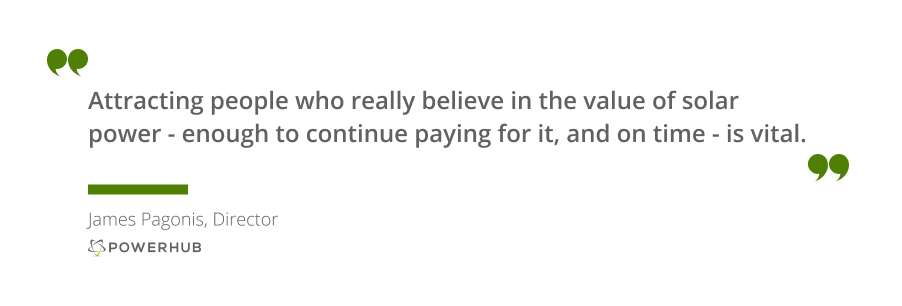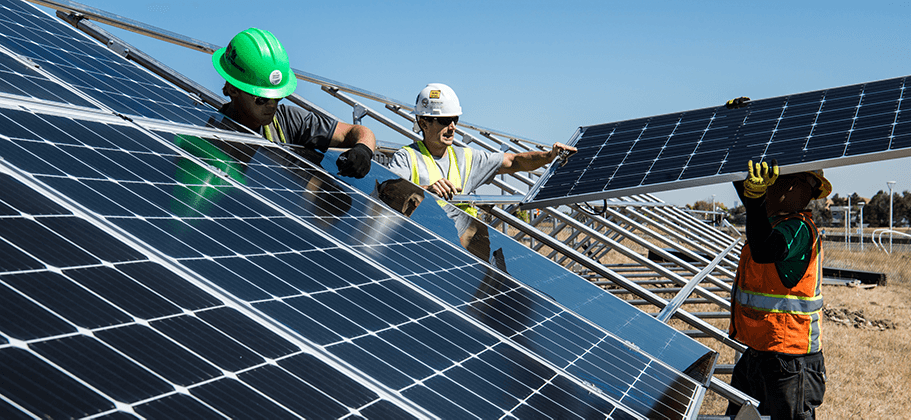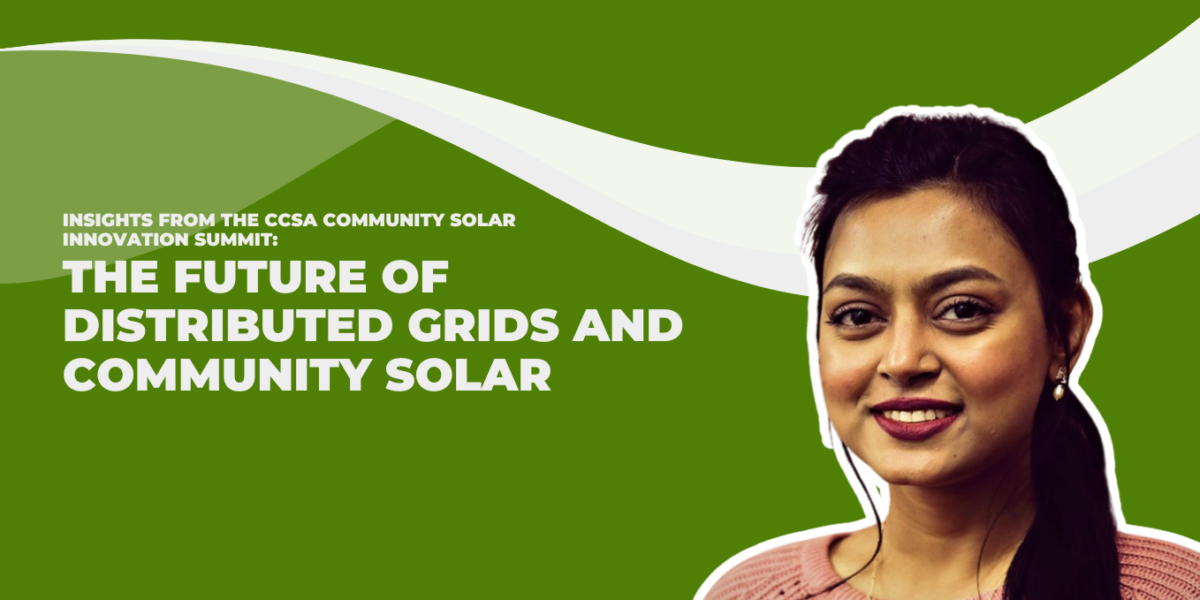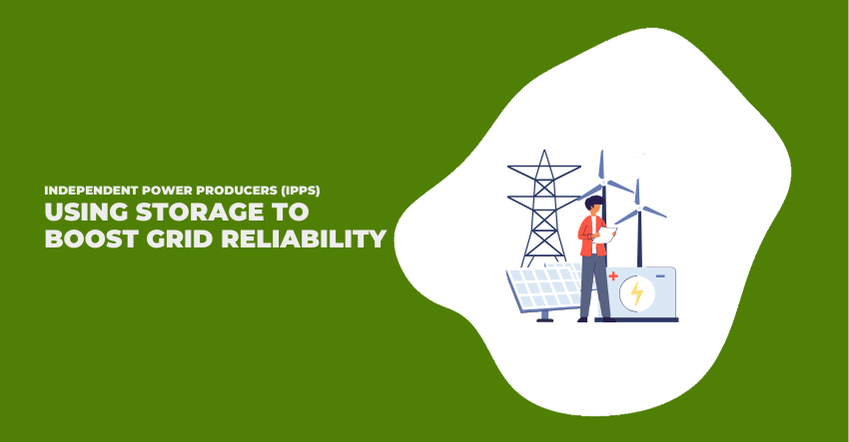There are various ways to design (onshore & offshore), build (mono-facial, bifacial, or concentrated solar setups), and finance solar power projects (from corporate PPAs, to invest-and-own models). If I had to pick one, my favorite of the bunch would be community solar programs.
Think of a community solar project like a solar facility that is owned by a large group of people. The project is broken down, almost like stocks—so you can buy or sell your share and expect a return.
Community solar has its origin in an older model: the solar co-op. While solar (or any renewable energy) co-ops are notoriously complex, community solar projects can be considered a more accessible and manageable evolution of the former.
This evolution has given a broader population the ability to participate in the renewable energy movement and choose the type of energy they use.
An increasingly popular solar structure, these programs are gaining a massive following in North America. In 2018 alone, there were 1,523 megawatts of community solar installed in the United States.
So, if you’re looking to learn more about community solar, here are five of the most common questions answered.
1. What’s the difference between a regular solar project and a community solar project?
Community solar refers to a type of financial model that sells chunks of a project (usually on a subscription basis, but at times with an upfront payment) to many buyers. These buyers then take advantage of a combination of incentives, like receiving part of their power from the project, expecting dividends from the output, and/or claiming credits on their electricity bills.
The difference between a regular solar project and a community solar project comes down to the business model. Instead of having one or a few investors and owners, a community solar project can have thousands.
The purpose behind community solar is what us industry geeks have been talking about forever – making renewable energy accessible and approachable. After all, one of the biggest barriers to producing renewable power as an individual is having a space that’s big enough to house those shiny panels, or having piles and piles of cash (yup, a dream for most of us!).
By breaking down the project into smaller pieces, solar owners open the doors to easy access and use of renewable energy amongst the masses. Becoming a part of community solar is empowering, and who doesn’t want that?!
2. Why do people buy into community solar projects?
There are three main reasons to buy or subscribe to a community solar project:
- People increasingly care about their impact on the environment. They want to feel better about the energy they use. Being part of a community solar project helps them reduce their carbon footprint.
- Subscribing to a project that supplies part of your power can actually be a cheaper alternative to regular power. When buying your shares, you are often given a fixed or at least steady rate, which means predictability. Since power can be expensive, locking in your rate is an attractive promise – not to mention, a pretty smart move..
- Community solar subscribers feel a sense of empowerment from actually owning something.
3. Why do people build community solar projects?
Like with any asset, developers and owners hope to make money out of community solar projects. And frankly—aside from practicing asset management and operating a well-maintained project—if the owners are able to attract a maximum number of subscribers at a rate that has a reasonable profit margin, the project has succeeded. Simple as that.
Moreover, governments are increasingly realizing the benefits of community solar programs, minimizing risk with a strong anchor tenant being a top one. In the United States, 16+ states have policies in place to support these programs, including Massachusetts, Minnesota and Colorado.
4. What are the biggest challenges to operating community solar?
One of the biggest challenges associated with a community solar project, and one the market is yet to figure out, is subscription management. There are a lot of unanswered questions that have to be dealt with in this regard.
For instance, what’s the ideal project size? Should you sell tangible assets such as individual panels, intangible kilowatts per year or do you simply sell a percentage of the project itself? How do you efficiently bill a thousand people? How do you ensure that they pay on time? In your financial model management, how do you predict people opting out or new people opting in, and how do you account for such participation in cash flows?
While most of the traditional activities of maintaining a solar facility like communicating with O&M providers or finding solutions to outages still apply, other processes—like invoicing, or engaging with stakeholders—are far more complicated.
5. Are community solar projects profitable?
They can be.
Given the management challenges surrounding community solar projects, it might come as a surprise that a successful project is pretty similar to any other profitable business. Aside from running a well-designed operation, it delivers value to customers. It engages and informs the people paying for the product.
Making Community Solar Work For Us
All that said, I’ve observed two “secret” traits from successful community solar projects in the United States: organization and engagement. To stay organized and track engagement, community solar project managers should make invoicing and customer engagement their priority.

Given that community solar programs have so many more stakeholders than a traditional solar project, it’s imperative for the asset management team to be meticulously organized . Doing so will help answer questions that gauge customer engagement levels like: has the customer paid their latest bill? Was there a recent touch point? Do they understand their production report?
Here’s the second secret: if you can answer “yes” to all of the above questions, you have an engaged subscriber. This person cares about the project and its success. They are much less likely to become a ‘problem customer’ that defaults on payments or will consider opting out of the project.
Truth be told, there is potential for community solar programs, which is why they are popping up in every country, every community. People want to buy direct power. They want to buy power that’s clean.
It then becomes our job, as part of the renewable energy industry, to supply the right format that adds value to their lives.




